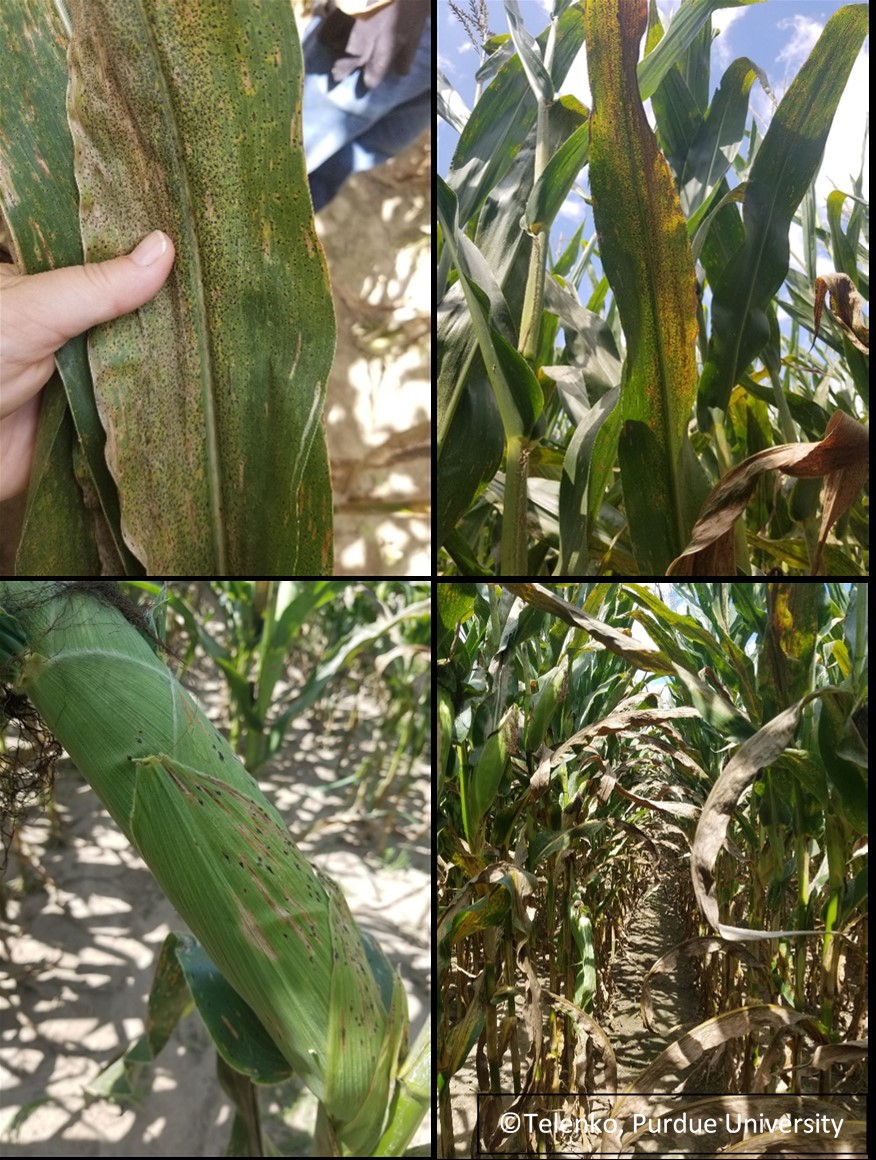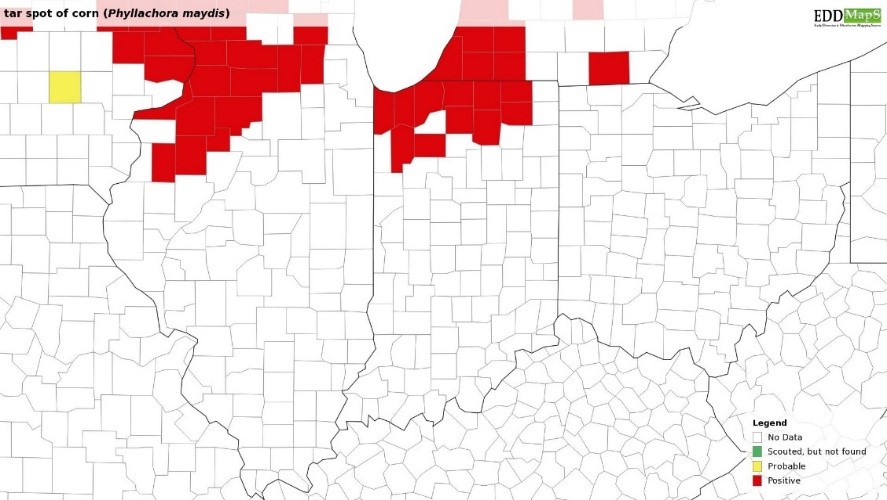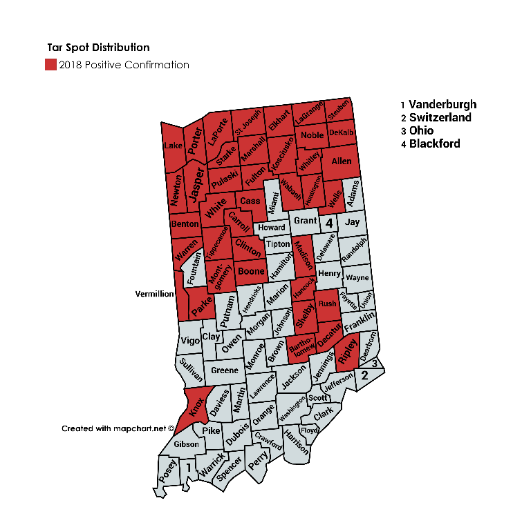Soybeans
We are starting to see a number of diseases in soybean across Indiana. This week in our plots in both northern and southern Indiana initial foliar symptoms of sudden death syndrome are making an appearance. In addition, we continue to see frogeye leaf spot and Septoria brown spot – the levels of both of these diseases were very low and our soybean are about R4 (beginning pod) to R5 (full pod). I suspect that if we continue to receive intermittent rain, we might start to see a bit more disease in soybean.
Corn
Tar Spot – We have confirmed 11 counties with active tar spot as of August 28 for the 2019 season. These counties all had a previous history: Elkhart, Jasper, Kosciusko, La Porte, Lagrange, Lake, Marshall, Noble, Porter, Pulaski, and St. Joseph (figure 1). I have included the 2018 tar spot map from Indiana for your reference (figure 2), as we are starting to find multiple fields, some heavily infested with tar spot, in northern Indiana. I have scouted fields that have 100% of the plants infected with stroma (black spots) ranging from a few on a leaf to >40% severity (figure 3). Unfortunately, the sites where we are seeing the highest severity were those that were planted early, before the wet spring, and have had good moisture all season. Luckily, at least the sites I have been in thus far, the corn has reached R5 and we hope it has minimal effect on yield. That being said, please keep a close eye on your late plantings. We have seen variable symptoms from a few stroma (black spots) on a leaf to many (figure 3). We again are requesting if you have any suspect locations to please update us and send a sample. I am especially interested in those counties we have yet to scout or receive a sample. Even if your county is red, I am also interested in learning if you have tar spot on your farm and what you might be seeing – feel free to send me an email/photo at dtelenko@purdue.edu or call 765- 496-5168.

Figure 3. Tar spot symptoms on leaves both on the lower and the upper canopy, on husks, and causing the lower canopy to rapidly senescence (dry up). (Photo Credit: Darcy Telenko)
We have added one new county, Floyd, to the southern rust map in Indiana since my last report. As a reminder, it has been confirmed in 12 counties in Indiana (figure 4). These include Daviess, Dubois, Floyd, Gibson, Henry, Knox, Martin, Morgan, Posey, Spencer, Vigo, and Washington counties and suspected in Sullivan and Putnam. Keep scouting and if you suspect it, please send a sample to the Purdue Plant Pest Diagnostic Lab (PPDL). Southern rust can cause significant yield loss if it builds up to high levels during silking and corn fill. Therefore, it is very important to keep a close eye out for this disease this season to make timely management decisions.





